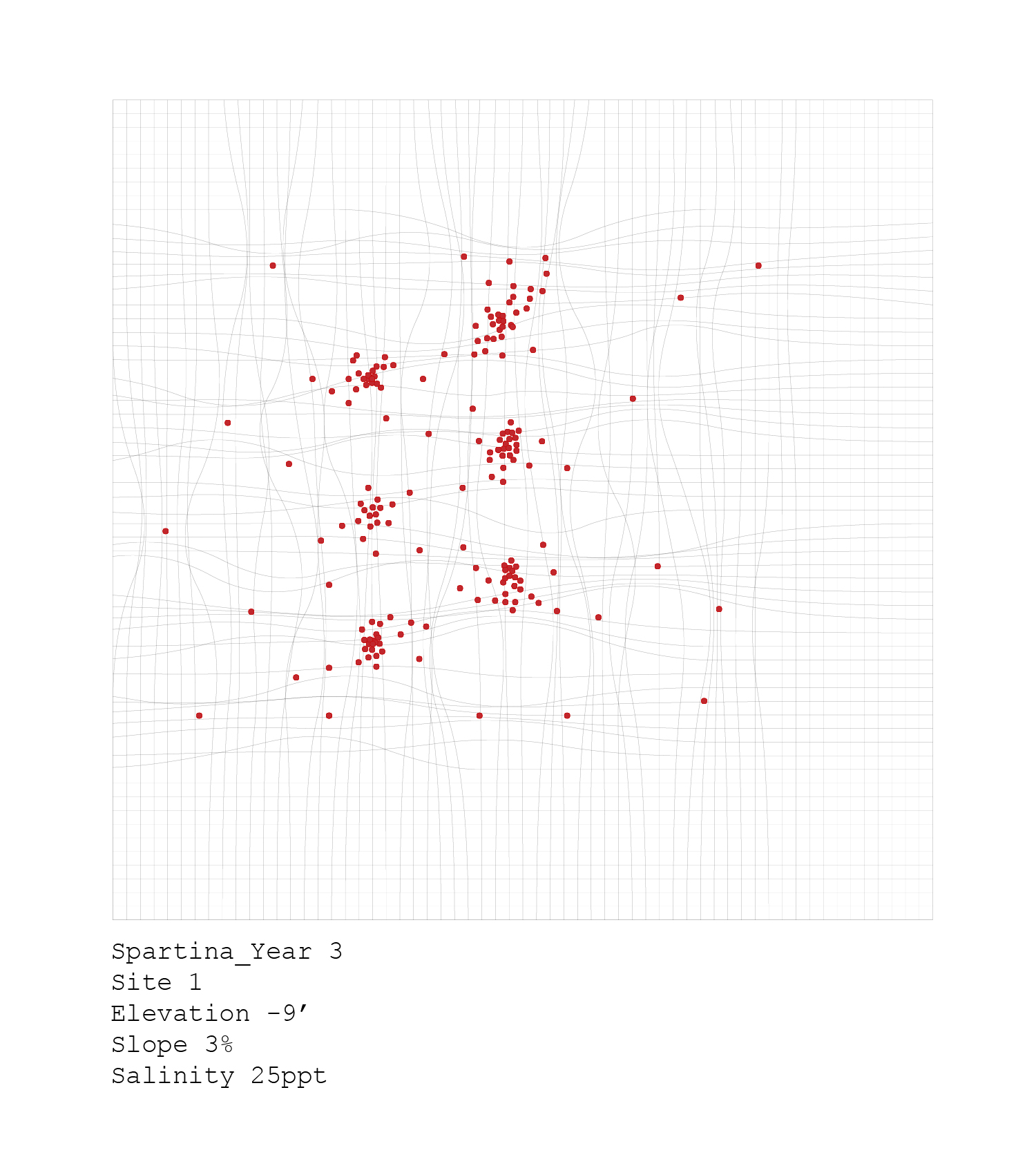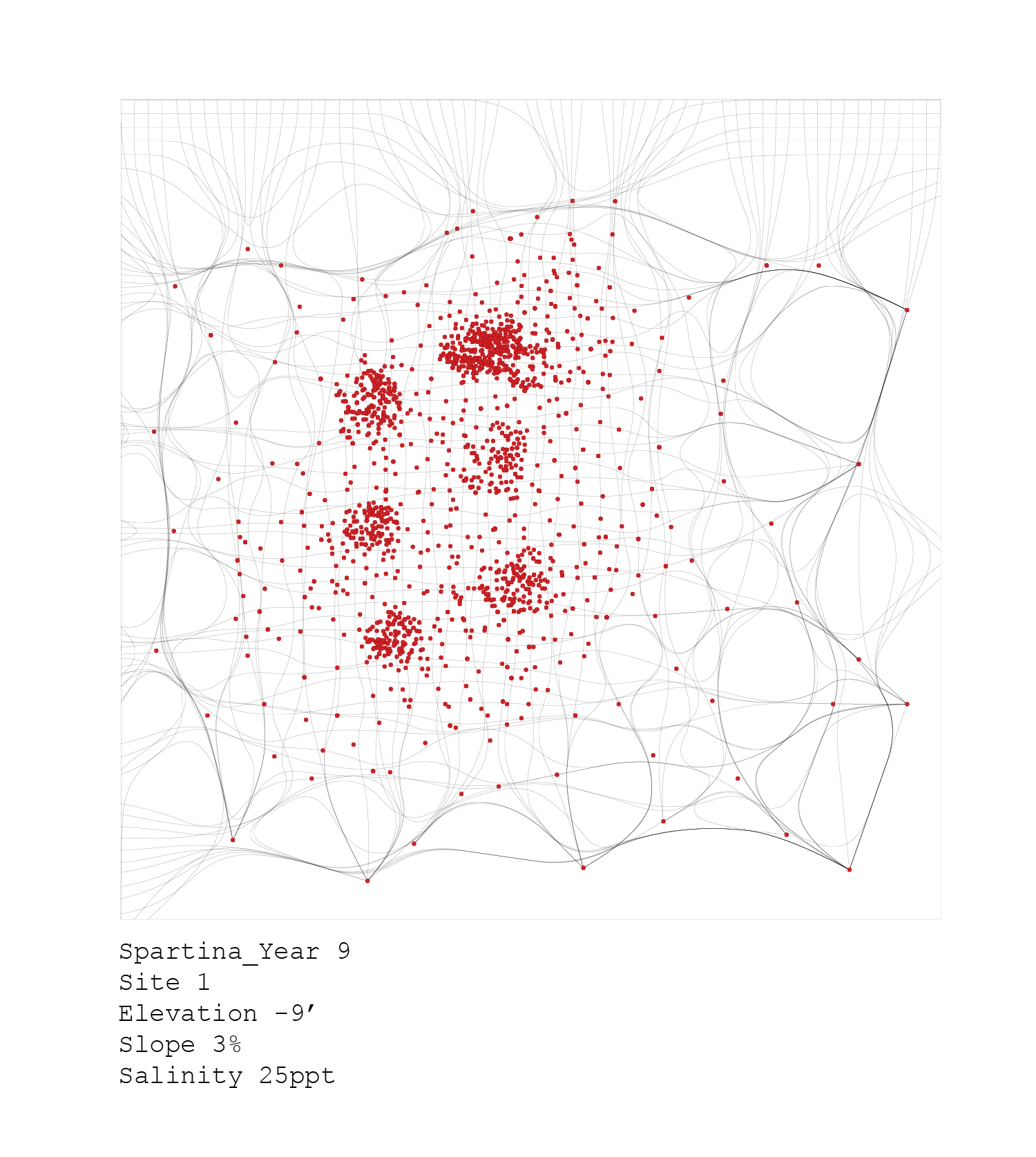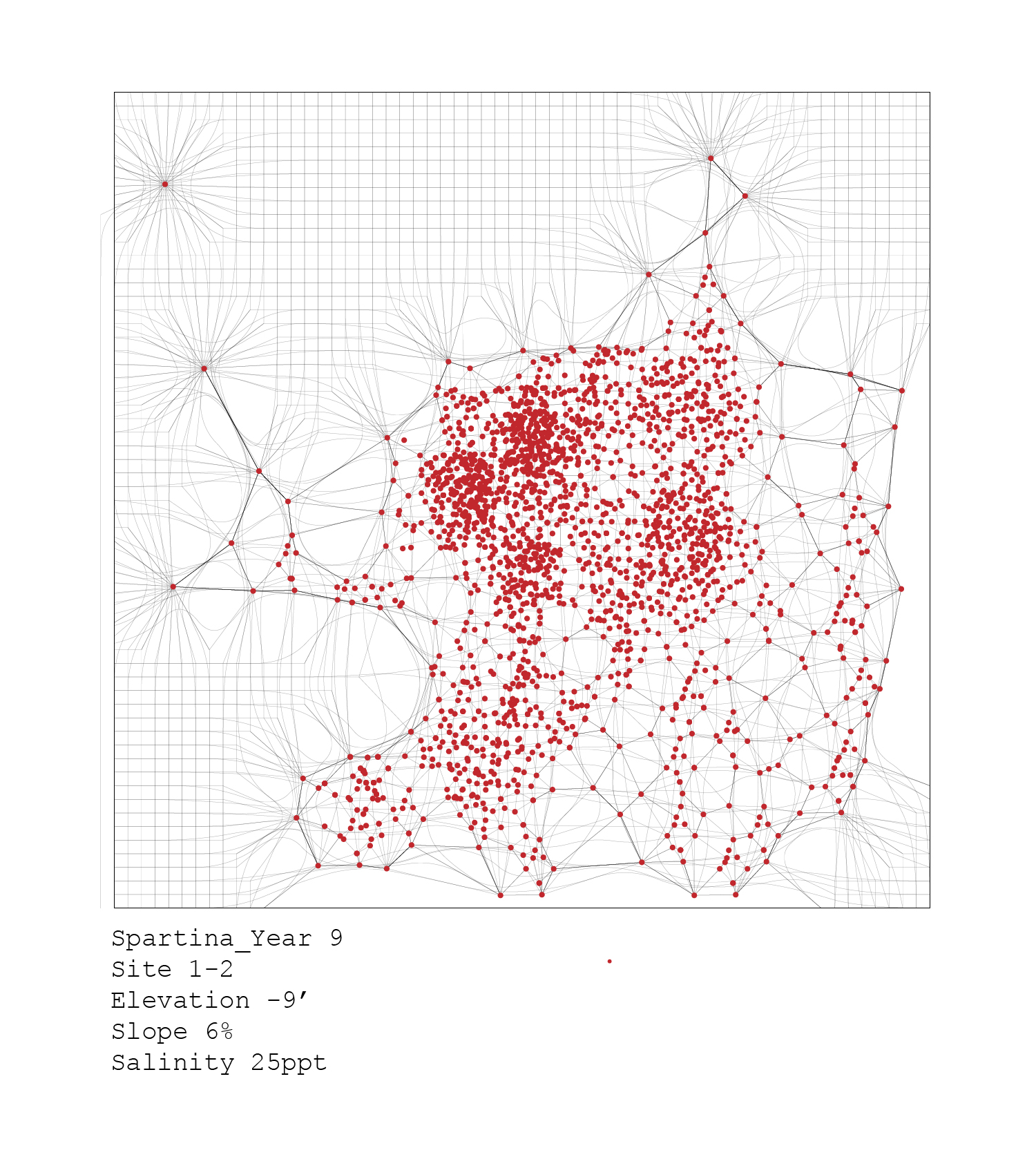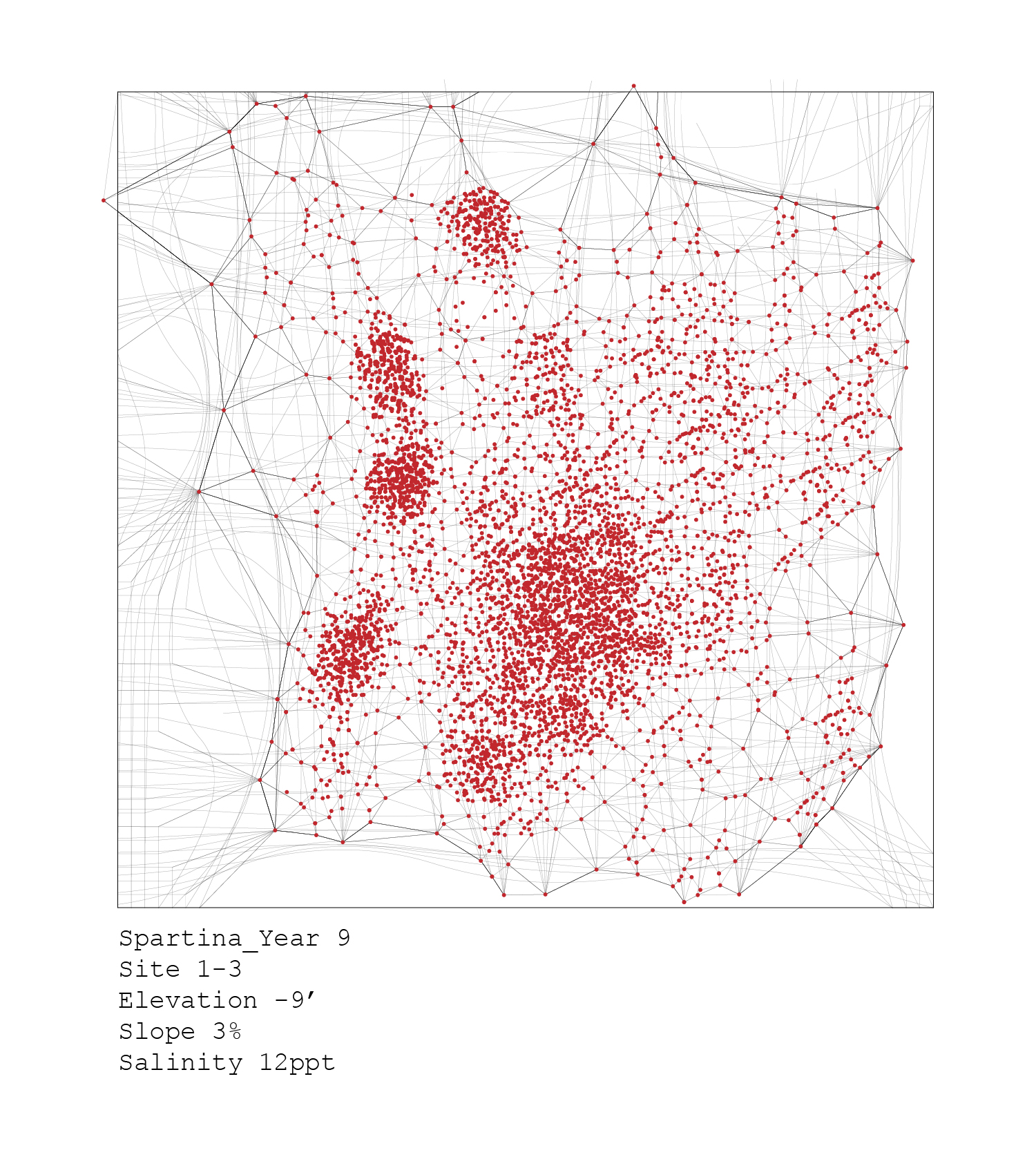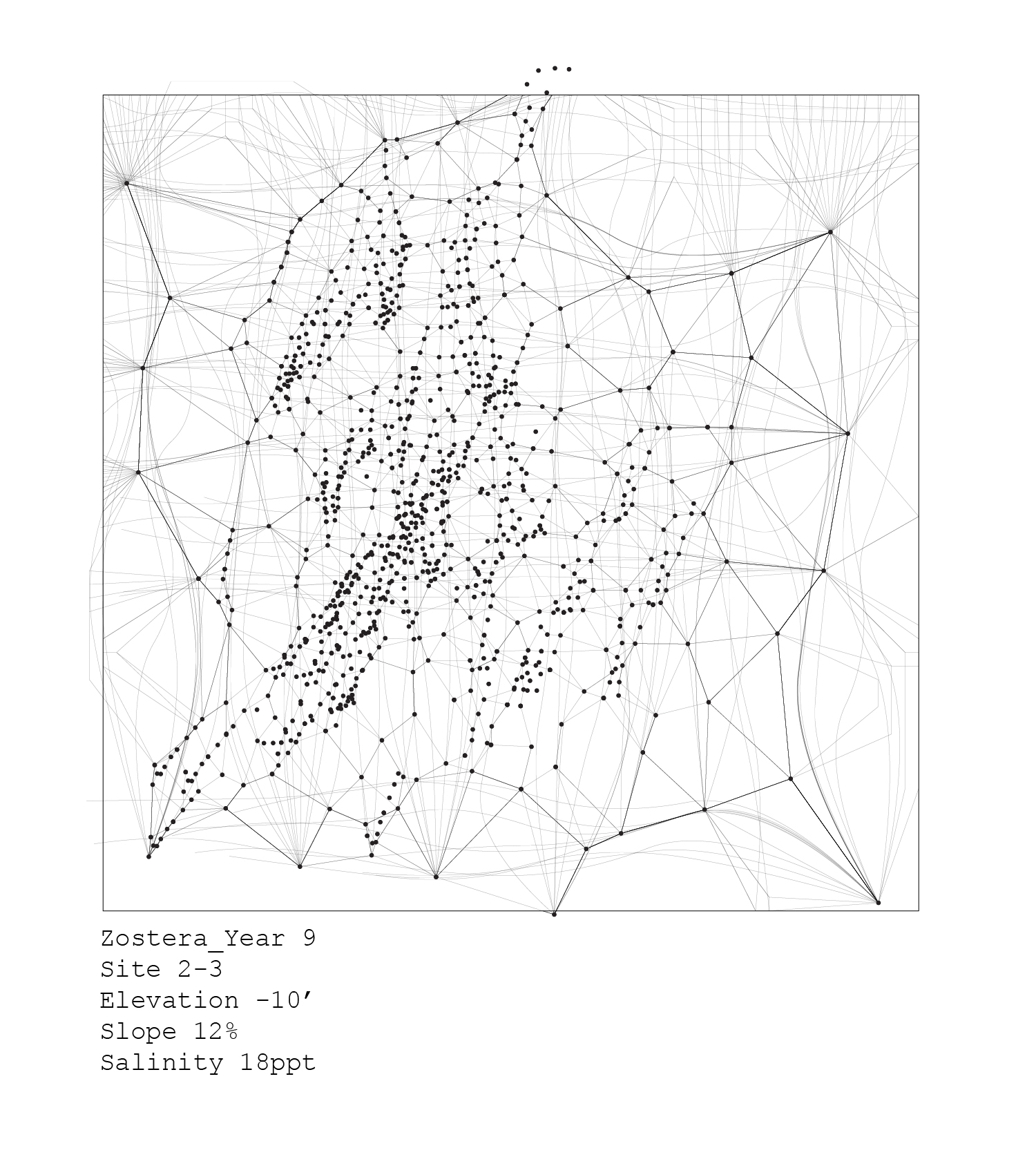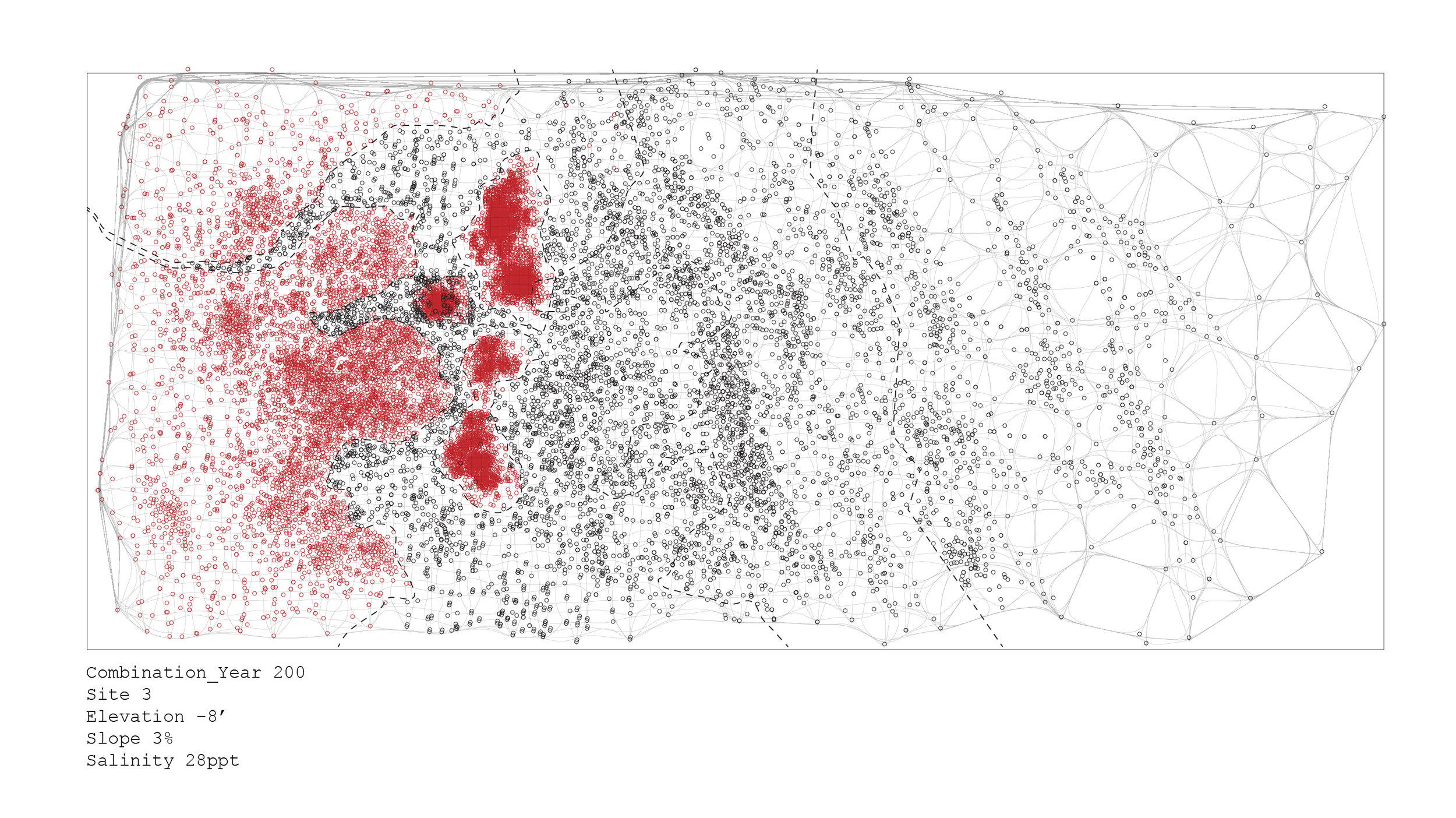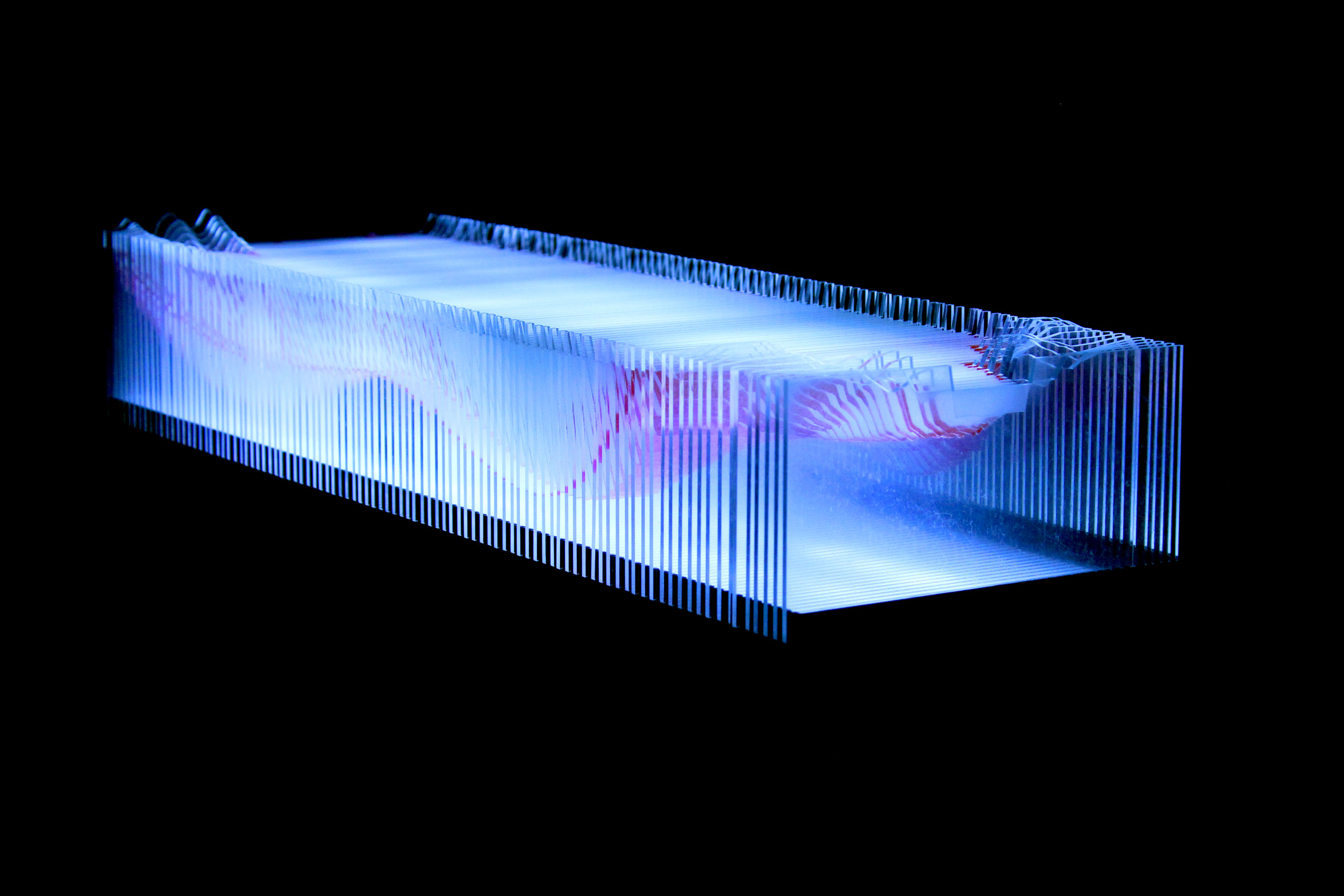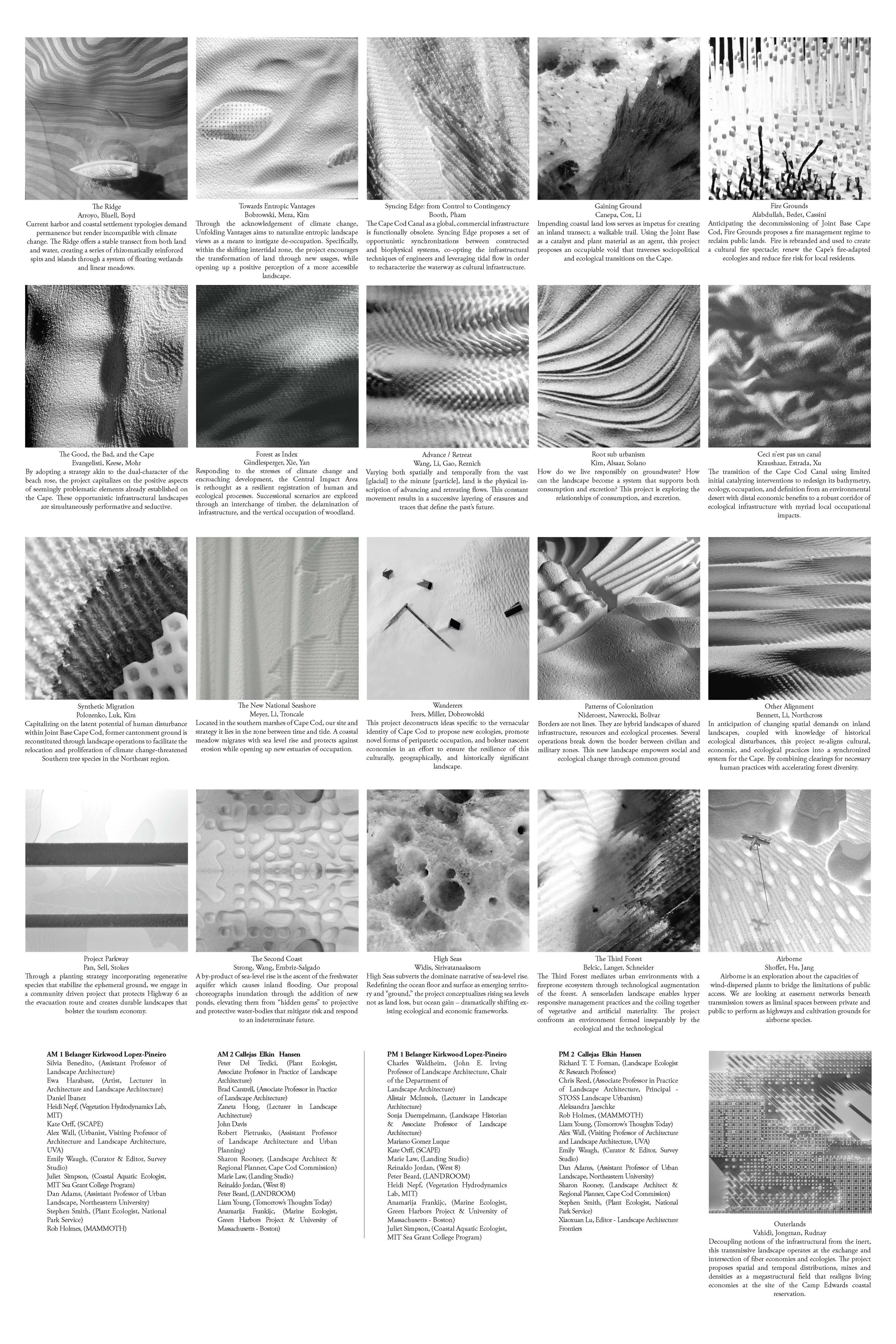Ceci n'est pas un canal ('This is not a canal')
Conceptual Temporal Model of the Morphology of the Cape Cod "Canal"
Under the Instruction of Andrea Hansen | Fall 2014
Cape Cod, MA
In collaboration with Bradley Kraushaar, BA '03, MA '08, MLA '16 and Xu Han, BE '13, MLA '16
—
Historical records reveal that the idea of constructing a channel was first considered as early as 1623 in the Plymouth Colony, where Pilgrims scouted the Manomet and Scusset rivers for potential routes. Despite, many failed attempts, the canal was finally realized into construction in 1909, under the private funds of the Cape Cod and New York Canal Company. However, with the continued size increase of vessels, such as the New Panamax, the canal is facing a projective obsolescence.
The transition of the Cape Cod Canal uses limited catalyzing interventions (including the introduction of subterranean and inter-tidal plants) to ecologically redesign its bathymetry, ecology, occupation and edge definition from an input-intensive environmental desert with distal economic benefits to a robust corridor of ecological infrastructure with myriad local occupational impacts.
Initial Site Analysis
Plants Species Attribute Analyses:
Spartina Alterniflora, Growth Analysis
Zostera Marina, Growth Analysis
Spartina + Zostera, Growth Analyses
Algorithmic Analysis of the Plant Species' Colonization Logic
Spartina + Zostera, Distributional Growth and Colonization Simulation + Visualization:
Temporal Seeding/Deployment of the Plant Species on Site
Temporal Plans of the Cape Cod "Canal"
Temporal Topographic Morphology Study
Militaristic Aerial Perspective above the Cape Cod "Canal"
Aerial Perspective
Underwater Perspective
Final Review of Ceci N'est Pas Un Canal, with Kate Orf, photo courtesy of Robert Tangstrom







